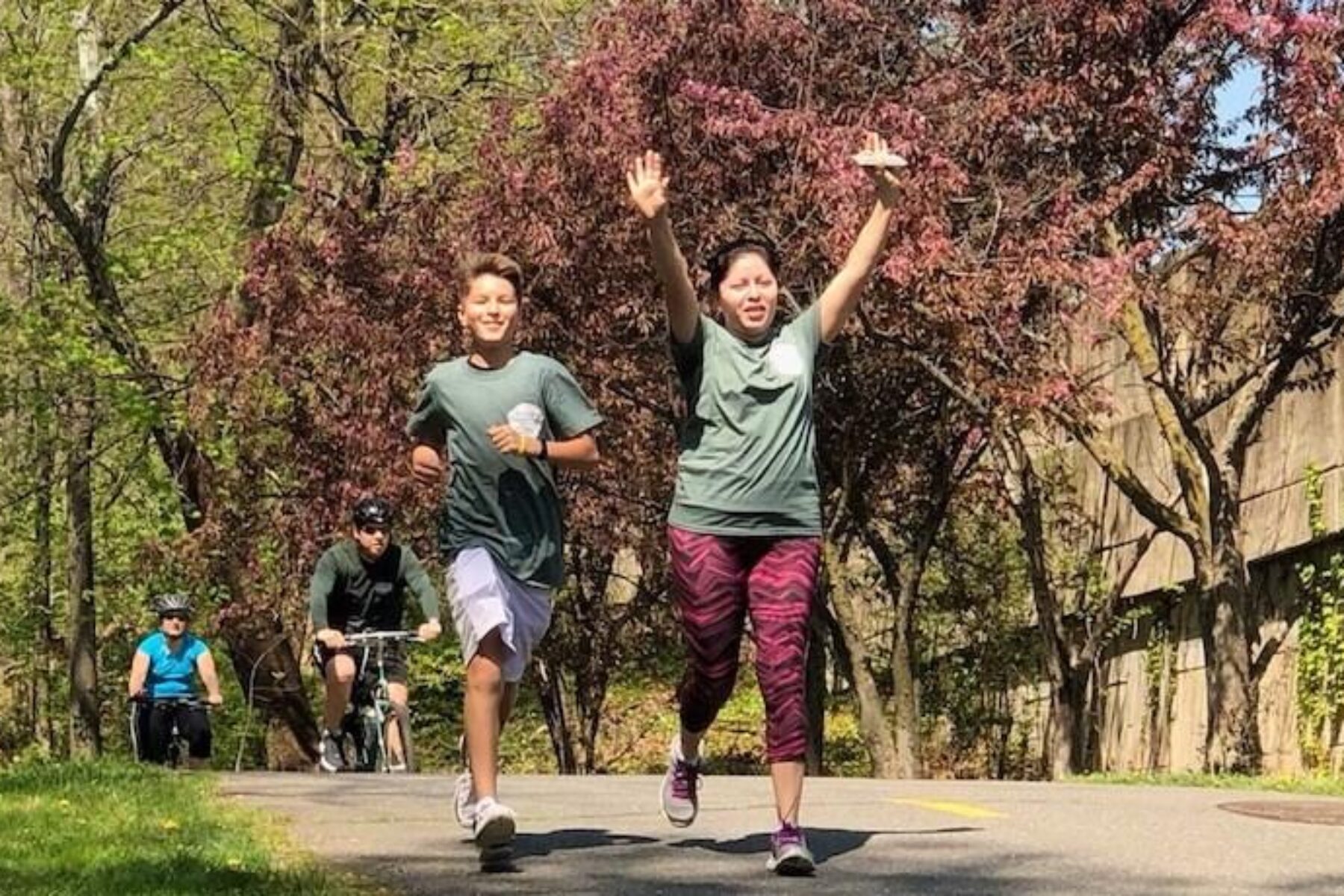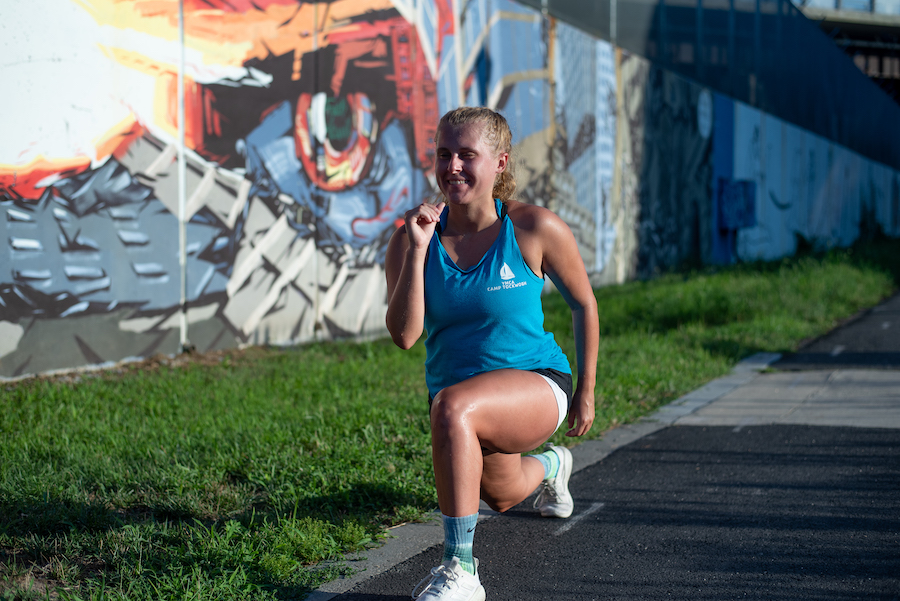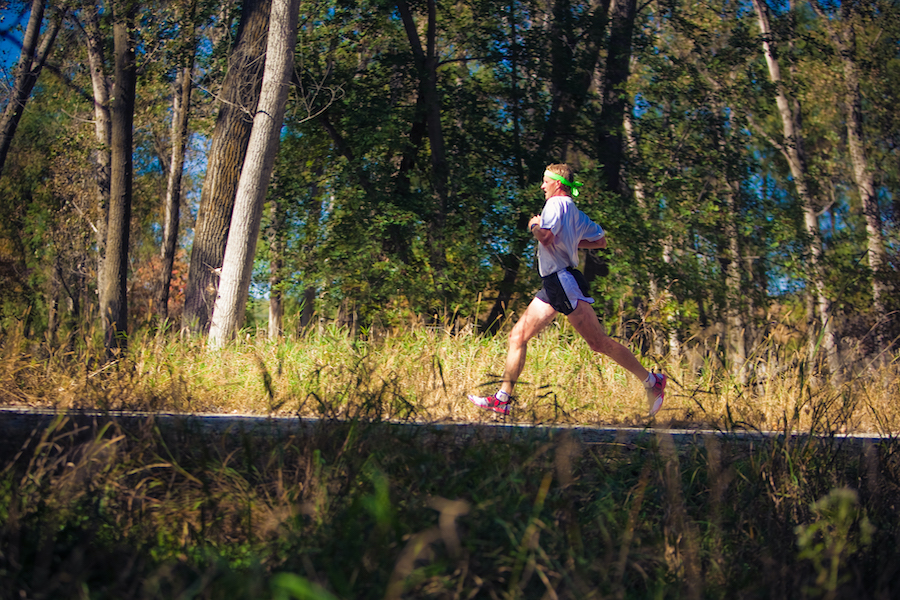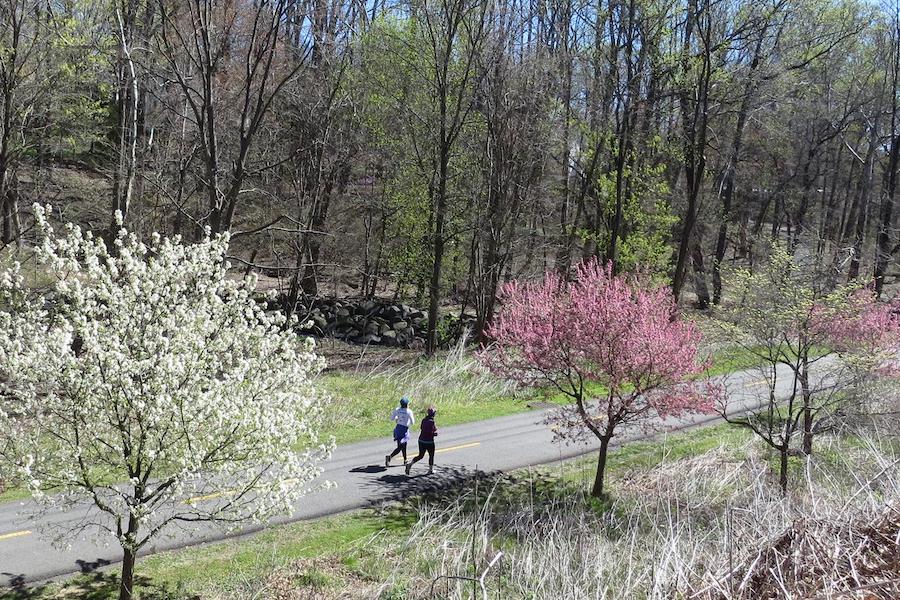How to Train for a 5K or 10K Using Rail-Trails

Este contenido también está disponible en español.
Many new runners start their fitness journey with a goal to complete a race they’ve signed up for. Oftentimes, some go straight for the half or full marathon distance, but seasoned runners and coaches alike tend to agree that a shorter distance like a 5K or 10K is a more ideal place to start if you’re a brand-new runner who also wants to avoid burnout or injury.

My first-ever road race was a local 5K when I was a senior in high school. Although I was a member of my high school’s track and cross-country teams, I was very much a recreational runner—more focused on running for fitness than competing with and beating my peers. The local 5K was an opportunity to put my fitness to the test with a faster effort.
“Paths such as rail-trails can offer clear open space, as well as even terrain, so that the runner is not having to deal with dirt, rocks or uneven surfaces.”
—India Cook, Atlanta-based RRCA-certified run coach
A 5K or 10K is a great first-race option for anyone, from youth to older Americans, especially in light of the COVID-19 pandemic. Locally, these races are often small, so it’s possible your area will be beginning to host some events this spring and summer. But if not, there are also many virtual options available, and they provide the perfect opportunity for which to enlist a friend or family member to prepare for and complete with you on the rail-trail course of your choosing. It’s also never a requirement to sign up for an event to get virtual credit, so you can designate your own 5K or 10K race day without having to spend a dime on an entry fee.
Rail-trails are an especially great option for training for that first race for a variety of reasons. For one thing, many of these trails are paved, flat or with a very light grade. They’re free to use, often close to home and easily accessible, making them an excellent option for anyone who loves to be outdoors.

“Paths such as rail-trails can offer clear open space, as well as even terrain, so that the runner is not having to deal with dirt, rocks or uneven surfaces,” said India Cook, an RRCA-certified run coach based in Atlanta. “[They] also can allow runners to see ahead of themselves and designate where they want to start and stop if they decide to run intervals. If you’re following a program for beginner runners, rail-trails can [make it possible for] fellow beginner runners to be out and together at the same time, and motivate and encourage each other.”
Once you’ve settled on a race and figured out the logistics—such as how much time you’ll need to train and any necessary gear—you can hit the rail-trail and get started. In the meantime, here are a few tips to help you along the way.
Prepare for the Beginning to Be Hard

In my 18 years as a long-distance runner, I can’t tell you how many times I’ve had people tell me “I could never do that.” Many people mistakenly think that to be a “runner” means the ability to step outside one’s door and eke out a few miles, having never run before, when in reality, very few human beings would be able to run even 1 mile nonstop with absolutely no experience or aerobic base. A run-walk approach, such as walking one minute and jogging one minute, is a more safe and effective approach. It can also help to lower your heart rate, reset the minds and relax the muscles, Cook said.
“Running is not easy, especially if you aren’t used to it, says Natalie Mitchell, an RRCA-certified run coach based in Los Angeles. “Gaining fitness takes time and patience, and runners need to remember that when things get tough, and they question whether they are becoming fit. Expect that if you run to the stop sign down the street, that is a big deal, and you should be excited.”
RELATED: Step to It: Seven Ways to Spice Up Your Walks
Give Yourself Plenty of Time to Train

While training-cycle times can vary, you can’t be too generous with prep time as a new runner.
“A beginner should expect to run at least three times a week to prepare for a 5K,” Cook said. “The training cycle could vary, but eight to 12 weeks is a good minimum, as it will also allow time to assess your fitness, nutrition, strength training, goals for the 5K and so much more.”
From there, start out easy, and don’t try and increase speed and endurance at the same time, Cook said. Limit the number of miles running to 1 to 2 miles in the beginning, and don’t increase the amount of mileage over 10% from week to week.
“Before starting a training program, the runner should think about their ‘why’—or more specifically: Why are you starting this program, and what are you wanting to get out of it?” affirmed Cook. “Think about the schedule that you have for your personal life and how training fits into it. Map out that schedule and prepare to get started.”
RELATED: Morgantown Man Gets a Running Start to a Healthier Life on Trails
Try an App

There are so many running app options that can help you train. From basic beginner apps like Couch to 5K and Runkeeper, to interactive apps like Peloton and Zwift, you’re bound to find something that will make your 5K or 10K training journey a lot more fun and confidence boosting. Some apps provide guidance from coaches and also play music, giving a vibe similar to that of an in-person fitness class.
Mitchell is a fan of Nike Run Club, which has an app that links with music and provides guided audio runs, sometimes with a professional athlete or celebrity cheering you on at the end.
“Runcoach is another great app that will plan all of your workouts leading up to your race, so all you have to do is run,” she says. “Both of these apps are also great because they are free.”
Get Fitted for Shoes Before You Buy

If you’ve never run before and you decide to browse a store or online shoe collection, you’re bound to feel overwhelmed at all the offerings. By visiting your local running store and having a knowledgeable associate evaluate your gait and stride, you can make sure to choose the right shoe for you.
“You have to figure out if you are a neutral or stability runner and find the right shoe from there,” Mitchell explained. “Ideally, it’s great to have two pairs of shoes to rotate, but at the very least, track the miles on your shoes and replace them after 300–500 miles.”
But shoes don’t have to be expensive! While the experts recommend getting fitted for a shoe that is appropriate for your gait and stride, once you know what shoe is right for you, there are plenty of inexpensive online retailers these days! It’s really about the fit—and ensuring the shoe you are wearing is running appropriate.
Take Steps to Prevent Injury

When it comes to staying healthy and avoiding becoming sidelined, the extras are just as important as logging the miles.
“Don’t just walk out the door and begin running; performing a series of simple, dynamic stretches is key to getting you loose and warmed up,” Mitchell said.
“Stretch and foam roll before and after runs, as well as on non-run days,” Cook added. “Strength training and cross-training [such as cycling or aqua jogging], should also be a part of your run plan.”
When it comes to mileage and time duration, less is more in the beginning, Mitchell said.
“Try not to get too excited and overdo it. You want to maintain consistency, and if you run too much one day and then can’t run for a few days, that defeats the purpose,” she explained. “Taking it easy will make you much more motivated to run the next day.”
For those who are particularly motivated, Mitchell recommends making an appointment with a physical therapist who can look for any weaknesses and imbalances, and who can potentially assist you with exercises specifically to strengthen those areas.
Finally, don’t forget to take complete days off from activity, and also prioritize getting plenty of sleep.
Try a Fartlek …

With your first race ever, you don’t necessarily need to put a lot of stock in speed training. But varying your speed, for example, breaking up your run up with 1:1 intervals of one minute fast, one minute jogging, can help you to break up the monotony on a run and help you find some extra pep and kick on race day. Rail-trails are especially great for mini-workouts like this because you’re less likely to have to stop at busy intersections and interrupt your groove.
… Or Some Strides

Similarly, either in the middle or at the end of an easy run, complete six accelerations or strides of 20 seconds, or up to 100 meters, recovering until you catch your breath in between each one. These will help with your ability to hold good form if you find yourself getting tired on race day. Similar to a fartlek, these will help break up your run and make it more fun.
Don’t Go Into Your First Race With a Time Goal

“I really believe new runners should go into their first race with no time goals at all, and instead thoroughly enjoy the accomplishment of finishing their first race and enjoying the process,” Mitchell said. “There will be plenty of time to plan for specific time goals.”
“I tend to tell my clients that your first is always a personal record (PR) no matter what—you will always be able to start from there,” added Cook. “Time goals can sometimes take away from the fun of the running process, so for new runners I [prefer first to] get them to the start and finish line, and the time portion can come later. This all depends on the runner.”
And Finally, Don’t Compare Yourself to Others

Many times, people get the idea into their head (often thanks to images portrayed in the media) that they have to have a certain body type and run a certain distance to be considered a “real” runner.
“You took the first hard step—you are trying, and if you run, you are a runner,” Mitchell said. “Don’t compare yourself to others, and don’t set your goal on someone else’s goals.”
RELATED: American Icons: Rail-Trails That Helped Shape the National Landscape

Donate
Everyone deserves access to safe ways to walk, bike, and be active outdoors.
